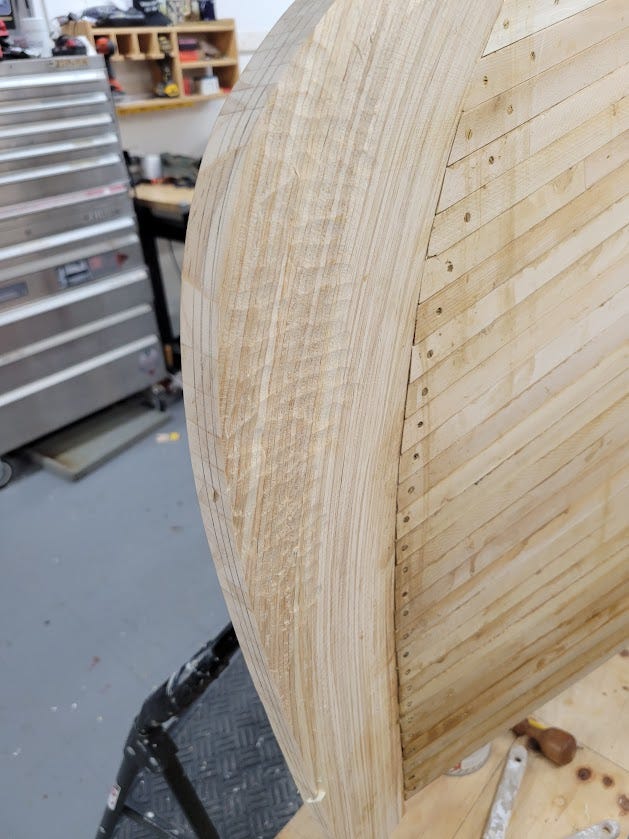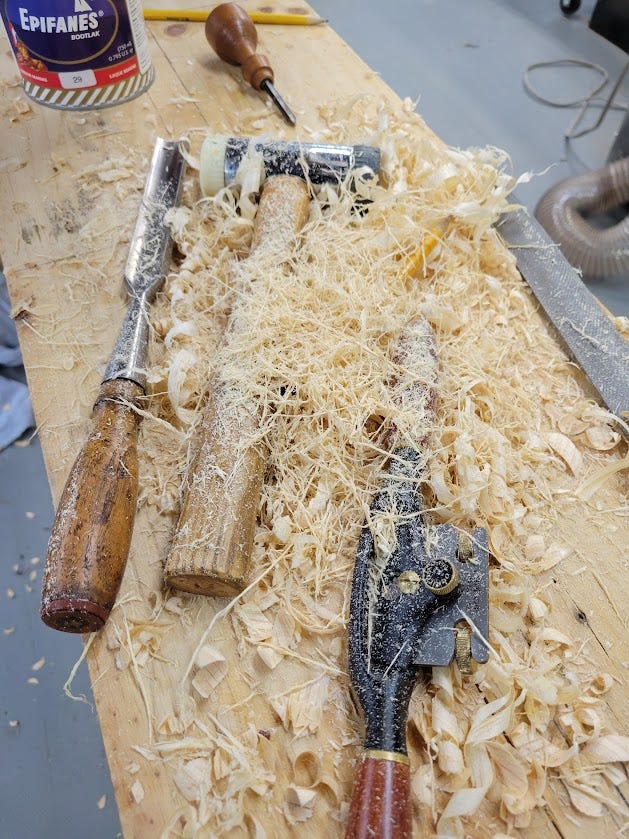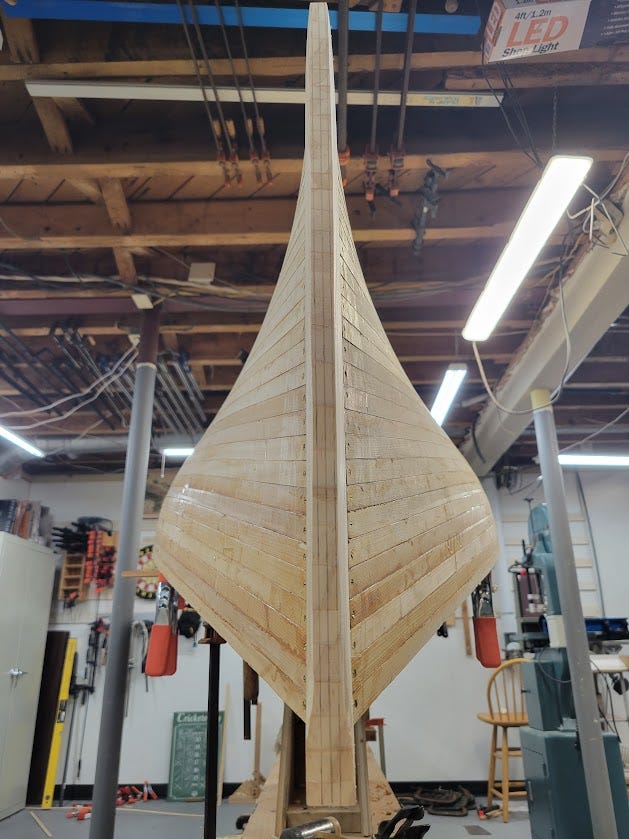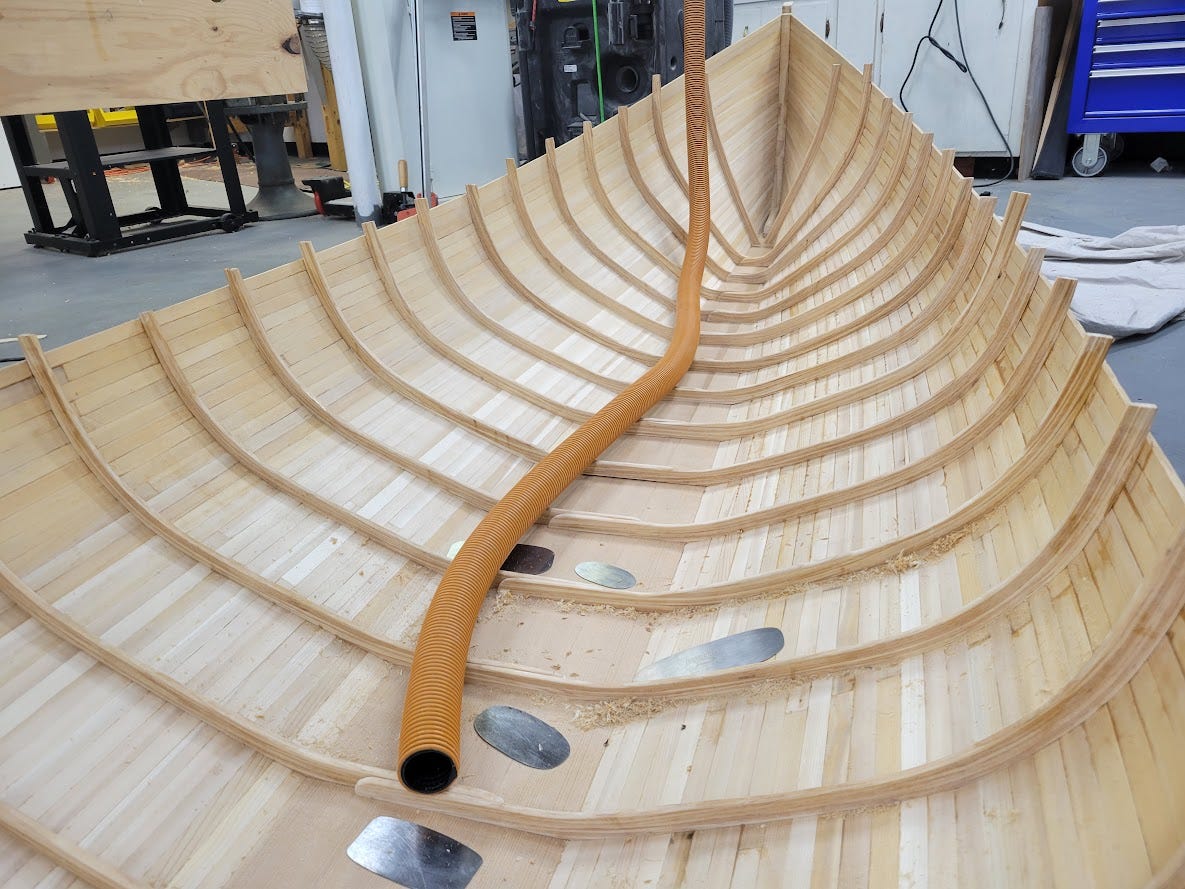Stick a Fork in it!
It's time to seal up the boat. Sanding, fairing epoxy and priming the exterior. We will be breaking this one up into a couple of posts.
Sanding and finishing projects are just about my least favorite thing to do. I’ve built the thing, I just hate doing that last 15% of a project that takes as long to complete as the first 85%. A big part of boat building is fairing the hull smooth, unless your boat is lapstrake. We won’t worry about that tho, point is, we have a buttload of sanding to do, and unless you’ve inhaled too many solvents, it’s pretty much guarenteed that you hate sanding.
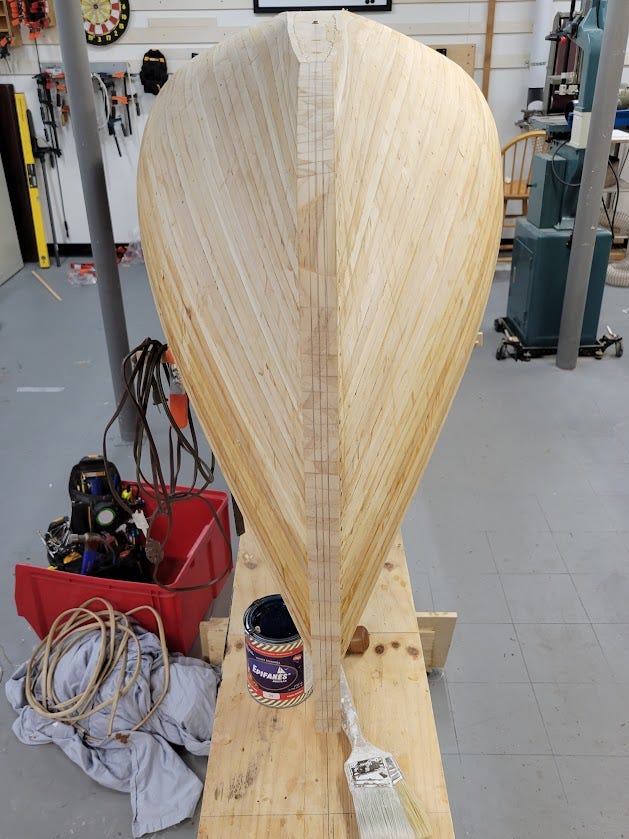
But there’s no need to let the good ol’ random orbit sander have all the fun! I used a combination of gouges, floats, planes and shaves to knock down the majority of the wood i needed to remove at the stems.
I also used a face float, which worked fairly well on this composite stem lamination of epoxy and pine strips. Odd? Unorthodox? Extremely!
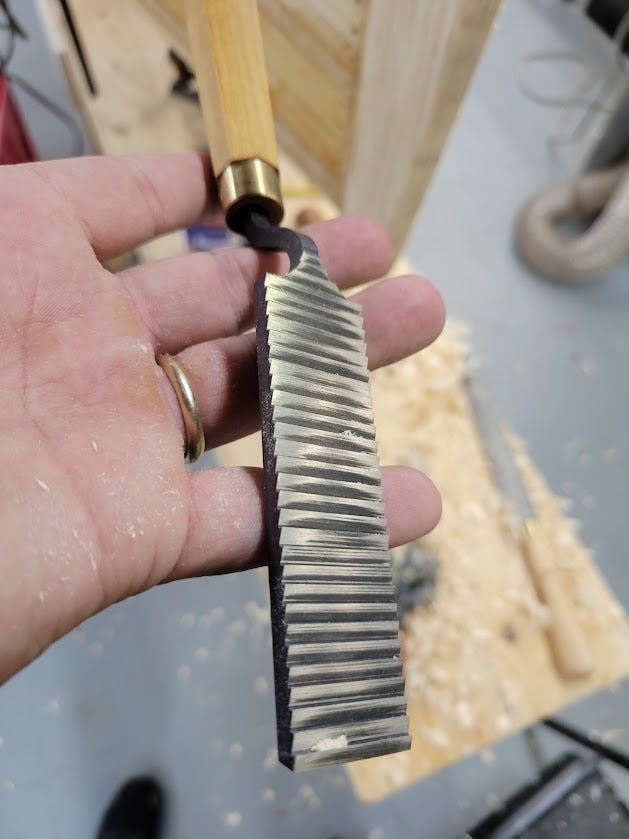
Here we see the stem reduced almost down to the 3/8 edge. I was avoiding removing material at the bottom until I figured out what I wanted to do with my stem post, see 2 posts ago.
So, with the bulk of the material removed from the stem it’s time to smooth out the entire hull from top to bottom, from front to back. These cedar strips are 1/4” thick, and so the hull will probably be down to 3/16” thick once the sanding on both the inside and out is finished.
I used a 5” sander and bought a 3” sander to do the bulk of this work, starting with 60 grit, and working up to 220. On the exterior of the boat, the visible seams between strips are the high spots, so it’s easy to work along the seams before working back over the hull, zigzagging up and down to smooth things out. Cedar wood’s pretty brutal stuff, I used a shop vac with a seperator at all times while sanding which did a pretty good job of keeping dust to a minimum. A dust mask is mandatory.
Honestly with the amount of sanding involved, I could see how investing in a Festool setup would be worth the $$ with ease of use, cleanliness and just from the amount of time you’re using the dang thing. Still, my makita sander ($120?), Metabo 3” Sander ($200) Rigid shopvac ($200 in 2017) and dust separator ($40) cost about the same as a single Festool sander. Hard to justify, I’d have to find ways to do a lot more sanding in my life…
Other than making the cedar strips, this is the most intensive powertool part of the build. With hand tool woodworking, where a surface is smoothed by a plane, sanding is often only necessary to roughen the surface to take a finish. There will be times later in the build where this is the case to add layers of epoxy or varnish. But in fairing the hull, hand planing and sanding is necessary to remove humps in the curvature of the boat. Planing will always be faster than sanding, but with different strips reversing grain and inviting tearout, sometimes it’s easier to creep in on fair with a sander.
It was at this point that I needed to add another set of ribs near the front and rear of the boat, (which if we are being honest, I had forgotten to do when I was stripping, so I popped the boat off the form so I could pay some attention to the inside of the boat, screw on the ribs, then finish fairing and paint the exterior.
Next time we’ll fair the interior of the boat, which is much harder. We’ll be using card scrapers to do the job, something I’ve sucessfully been able to avoid using in woodworking until now.
Nothing ventured, nothing gained. Thanks for stopping by!



